Transcribing together
Volunteers join together to transcribe the notebooks of notable British ecologist, Oliver Rackham
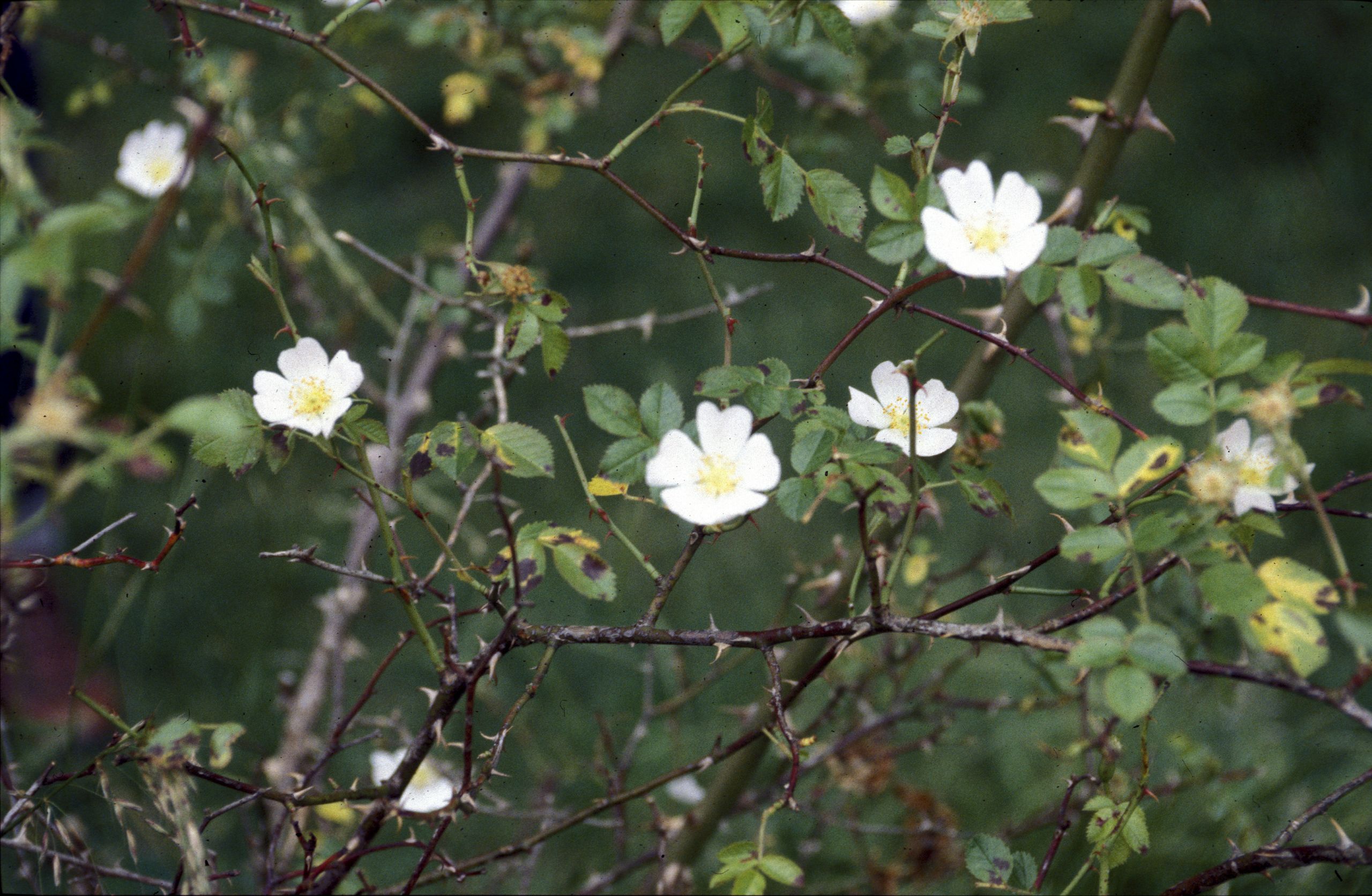
A crowd-sourced project launched by the Cambridge Digital Library (CDL) has helped to begin the task of transcribing the notebooks of leading historian and ecologist of British woodlands, Oliver Rackham, thanks to the generosity of an army of volunteers.
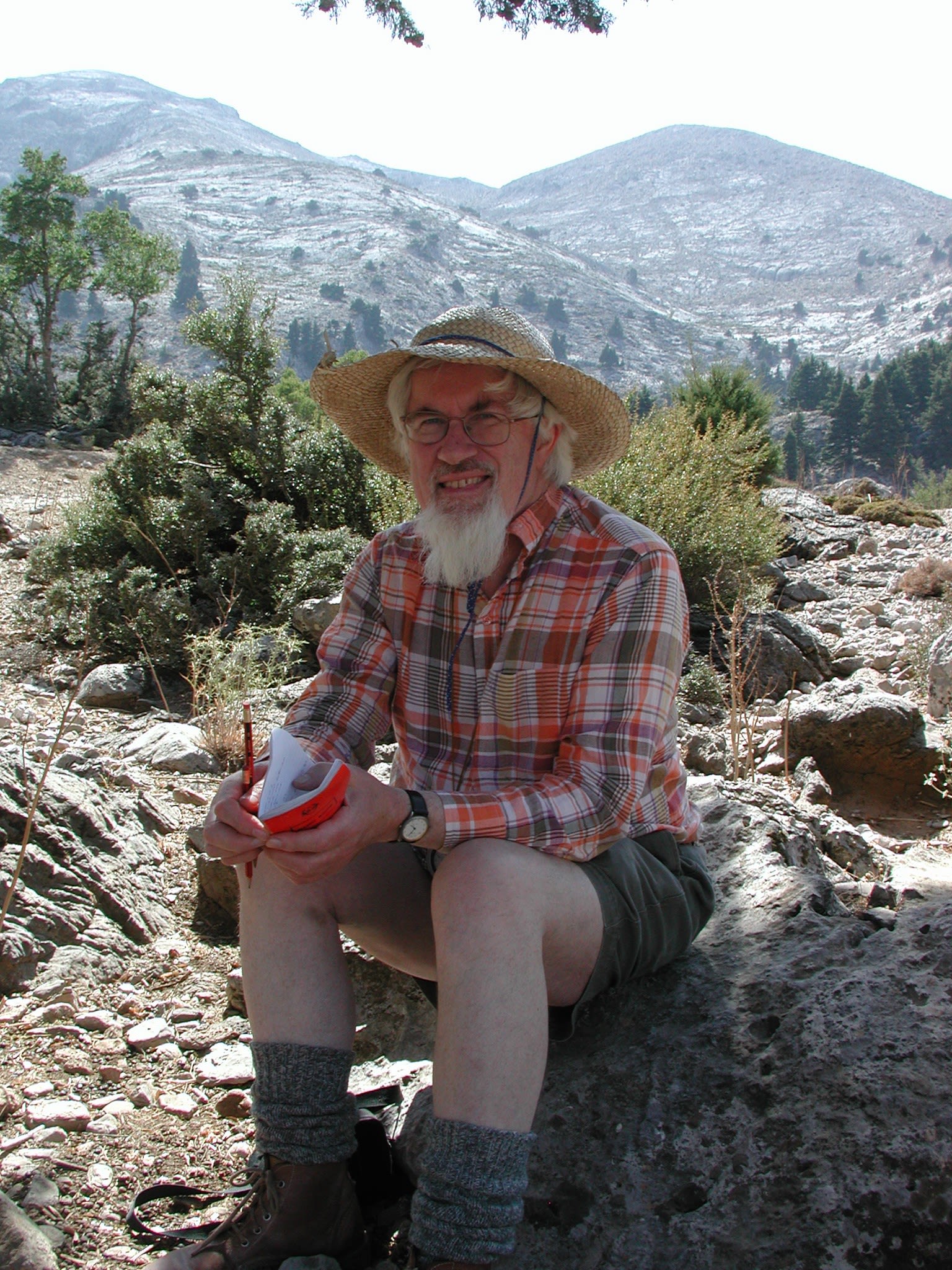
Oliver Rackham working in the White Mountains of Crete 19 July 2008. Credit: Jennifer Moody
Oliver Rackham working in the White Mountains of Crete 19 July 2008. Credit: Jennifer Moody
It’s March 2020 and Cambridge University Libraries have had to shut their doors due to the coronavirus pandemic.
Andy Corrigan, Digital Library Coordinator, and his team are looking for inventive projects and ideas that can be achieved remotely.
First launched in April 2020 with the aim of transcribing digitised material that does not have any existing research project to do so, the Transcribing Together project was kick-started with a collection of nearly 400 small notebooks used by ecologist Oliver Rackham.
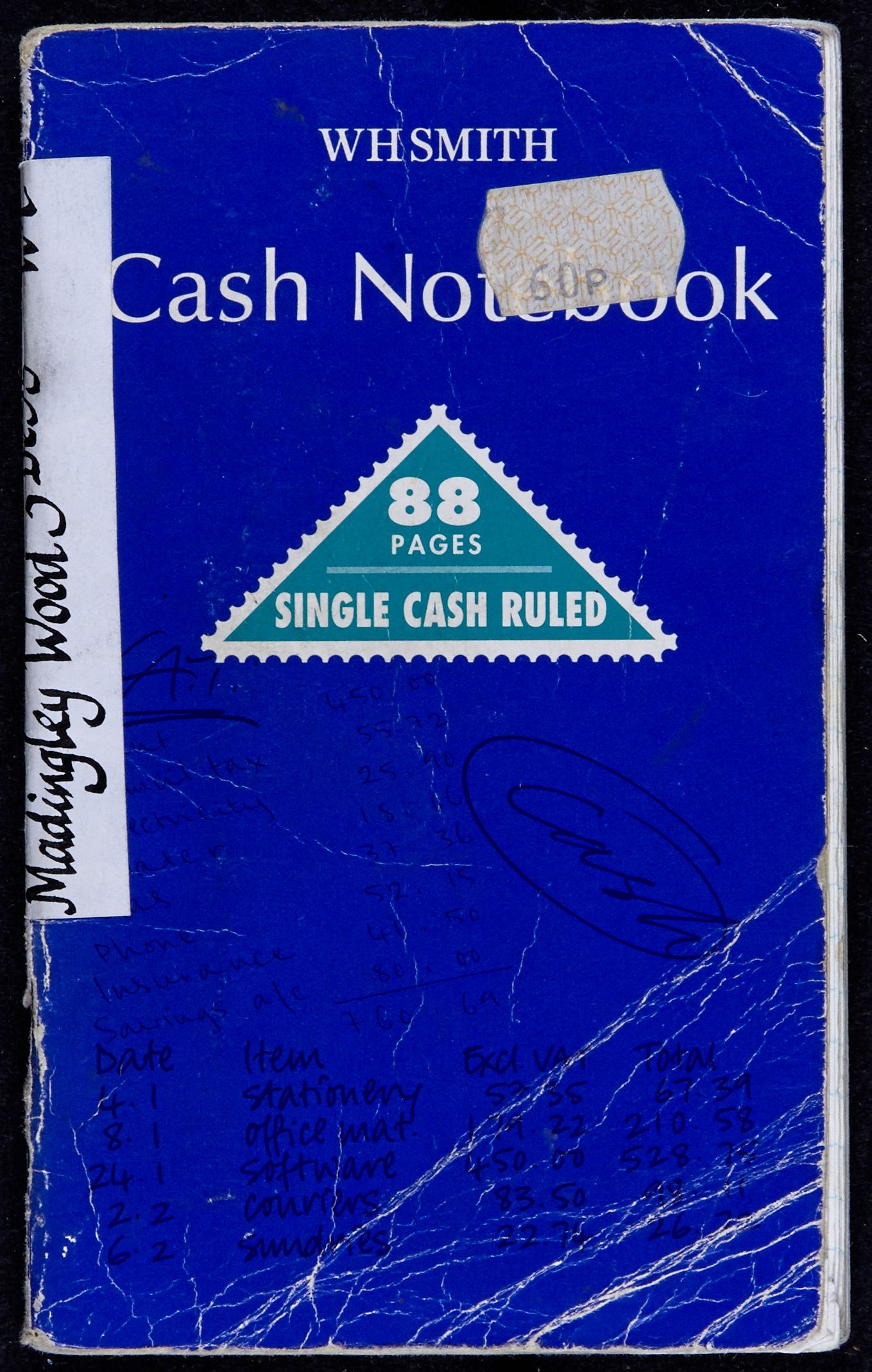
Madingley Wood notebook, covering 13 December 1995 to 29 September 2002. Credit: The Master and Fellows of Corpus Christi College, Cambridge
Madingley Wood notebook, covering 13 December 1995 to 29 September 2002. Credit: The Master and Fellows of Corpus Christi College, Cambridge
Born in Bungay, Suffolk, in 1939, Rackham was educated at Norwich School, matriculated at Corpus Christi College in 1957, and was elected Fellow of the college in 1964. He would later serve as Master from 2007-2008. Although he began by studying physics, as a graduate student he turned his attention to botany, particularly the physiology of plant growth and transpiration.
Rackham was a prolific historical ecologist whose prime interest was the function, history, and management of British woodlands. He kept a series of notebooks, which he began during his youth and continued until his death, in which he recorded observations on plants seen in his home surroundings and on his travels, in addition to information about the weather and his college duties.
One of the distinctive features of Rackham’s work was its interdisciplinary nature, and particularly the way it related scientific observation to historic and cultural context, revealing the nature of man’s interaction with his surroundings.
“Oliver was a wonderful teacher and an accomplished sleuth,” said biologist and writer Merlin Sheldrake.
“He would test us: 'Why are the primroses and bluebells on the woodland floor growing in lines?' We’d um and ah, usually in vain. After a while he’d provide the answer with a quiet flourish: 'The primroses and bluebells reveal the ridges and furrows left behind by medieval ploughs which worked this land before it became woodland in the thirteenth century.' Under Oliver's influence, the clean line I had imagined dividing ‘nature’ and ‘culture’ started to blur.”
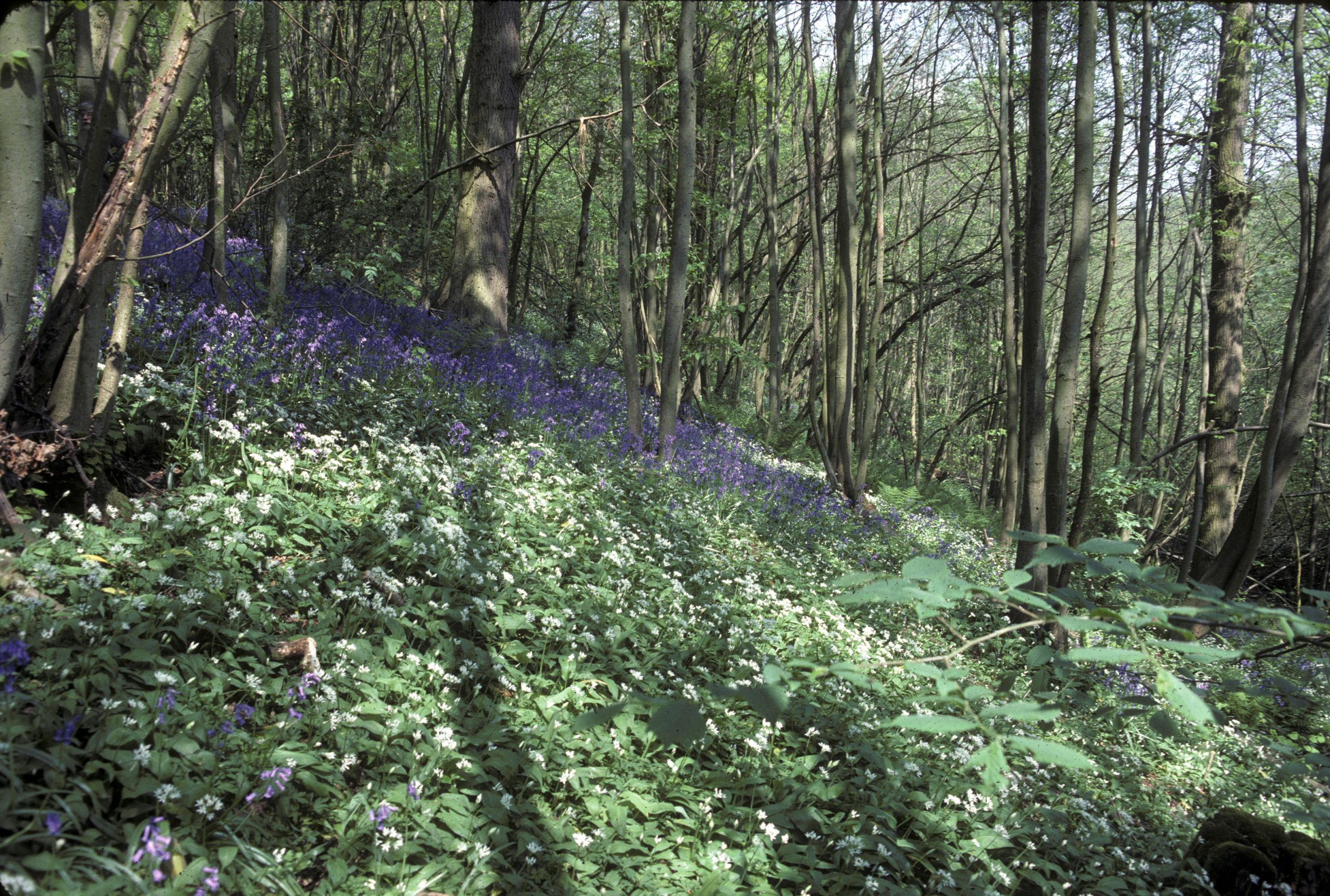
In total, there are over 1000 notebooks in the Rackham archive which is housed in Corpus Christi College, 400 of which are already publicly accessible, with transcribers already working on them.
Currently the notebooks can be viewed on the CUDL alongside a sample of photos taken by Rackham.
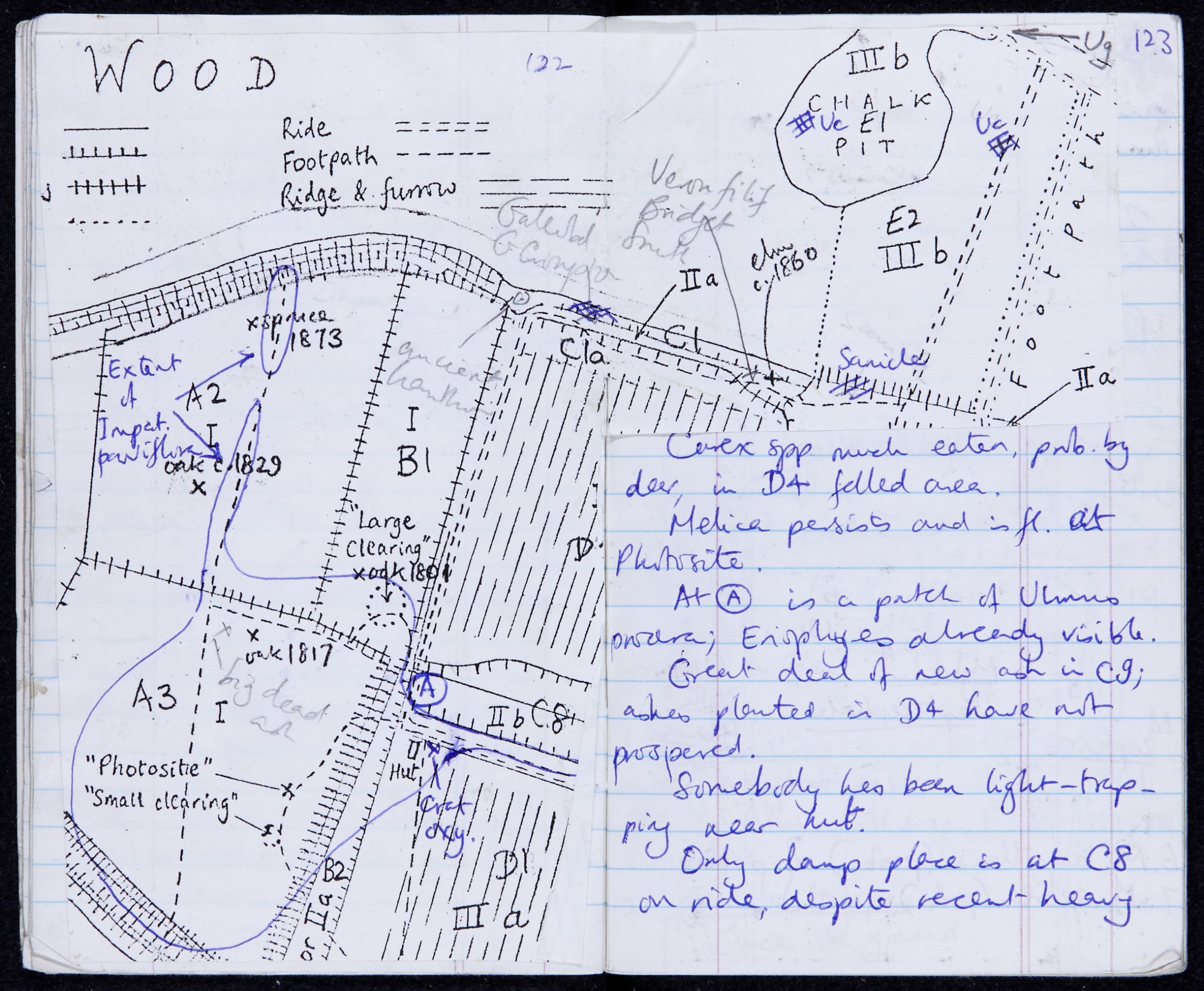
Sketch map showing species in Madingley Wood. Credit: The Master and Fellows of Corpus Christi College, Cambridge
Sketch map showing species in Madingley Wood. Credit: The Master and Fellows of Corpus Christi College, Cambridge
“We are often approached by research projects who want to combine their research with digital images to create an online edition. Some of these have been working for many years and in great detail on their subject, often producing rich transcriptions of text-based objects,” said Andy Corrigan.
“But sometimes we work with a fantastic archive of material, such as that of Oliver Rackham at Corpus Christi College, which is catalogued and online but don't yet have a major project behind them to take the next step in enriching the data.”
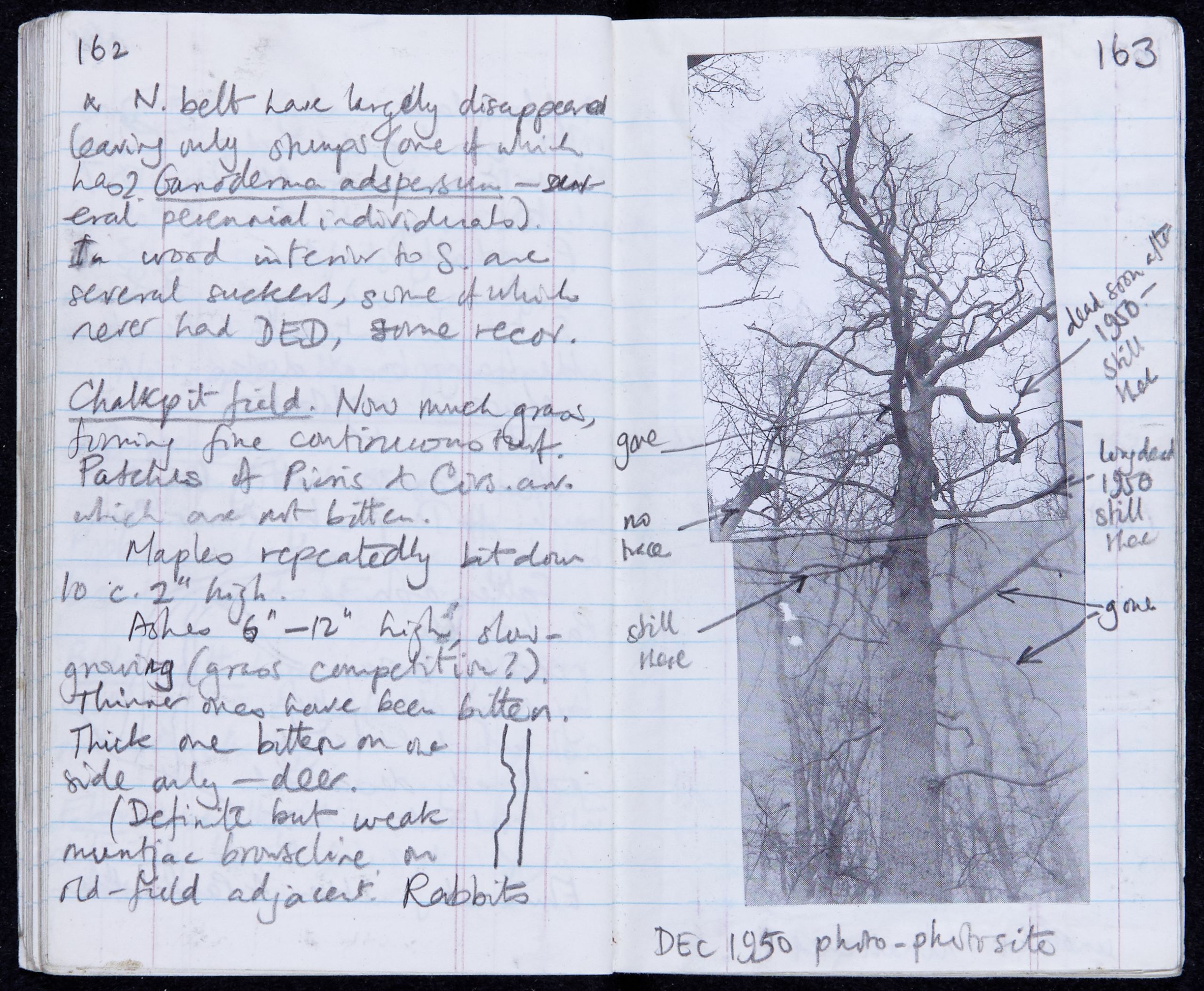
Madingley Wood, includes printout of a photo of a tree from December 1950 and he notes which branches are still there. Credit: The Master and Fellows of Corpus Christi College, Cambridge
Madingley Wood, includes printout of a photo of a tree from December 1950 and he notes which branches are still there. Credit: The Master and Fellows of Corpus Christi College, Cambridge
Rackham's notebooks are an incredibly valuable dataset, containing unique information on species change in a variety of habitats over many decades. However, until recently the majority of this information was locked down in images where it can neither be searched nor analysed.
“By transcribing the images we open up the true value of the notebooks, allowing them to be searched, interrogated, re-interpreted and become a part of a much bigger digital ecology,” says Corrigan.
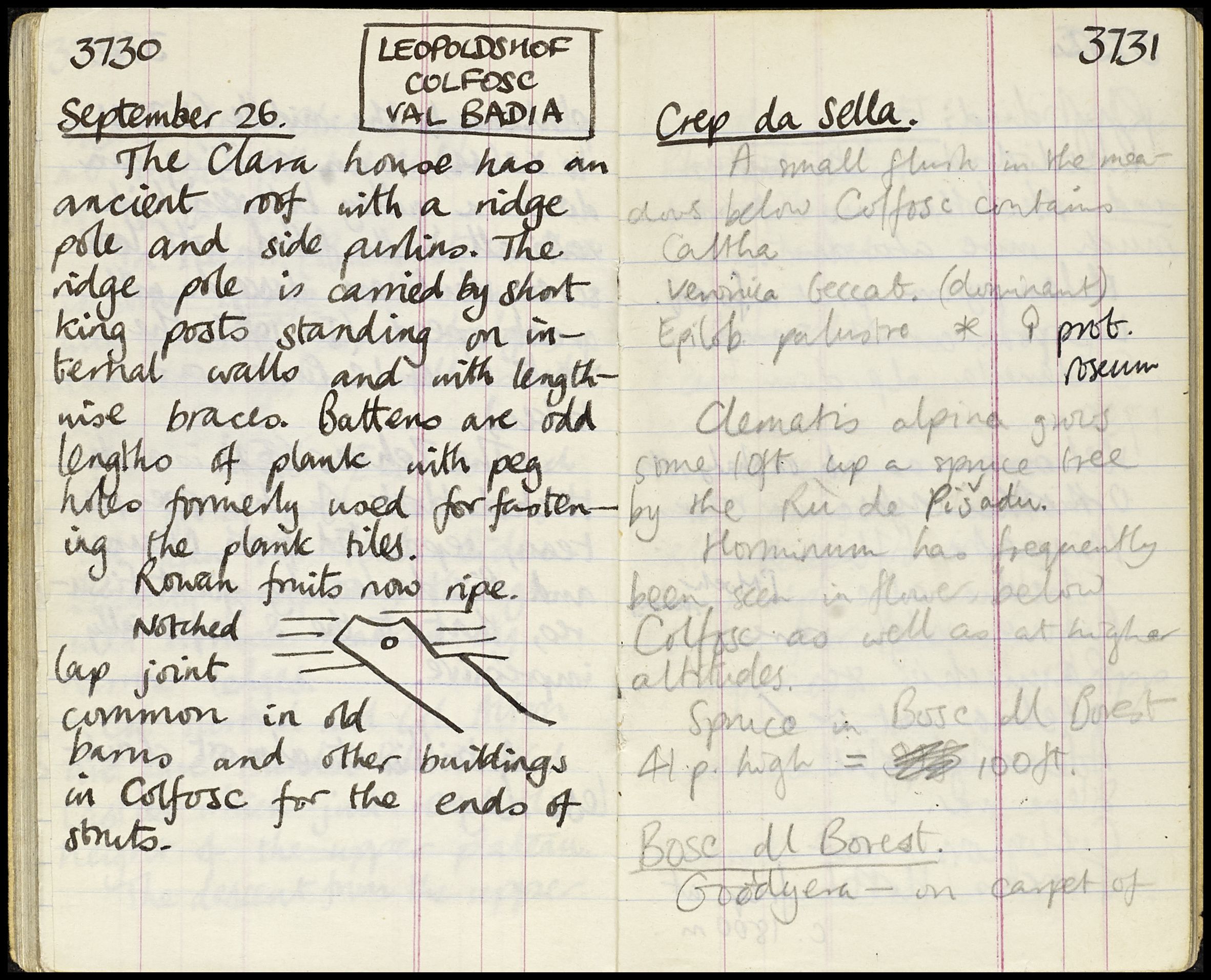
Rackham describes traditional Alpine buildings in Colfosc, Italy. Credit: The Master and Fellows of Corpus Christi College, Cambridge
Rackham describes traditional Alpine buildings in Colfosc, Italy. Credit: The Master and Fellows of Corpus Christi College, Cambridge
“Now, when you search Cambridge Digital Library for the term “tree”, nearly as many results are returned from the Rackham Collection as from Darwin’s letters and papers!”
The transcribed images can help us see the context in which Rackham’s work sits, broadening across time and space, combining search results from the notebooks with results dating back to the ancient world, such as the Cairo Genizah, and across the breadth of the Royal Commonwealth Society archives, the contents of which span the entire globe - trees pop up everywhere!
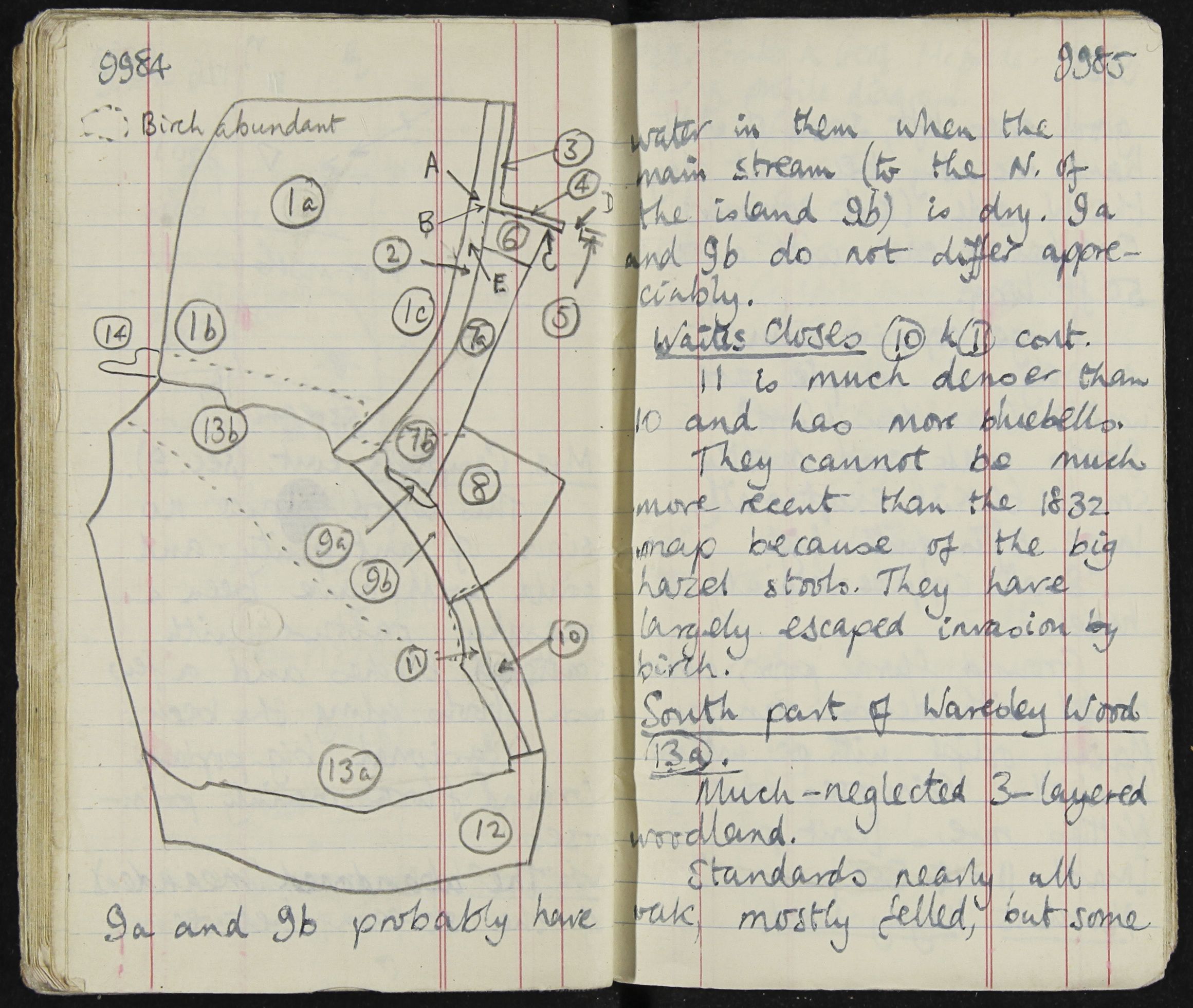
Rackham sketch of woodland near Great Gransden, Cambridgeshire from 1968. Credit: The Master and Fellows of Corpus Christi College, Cambridge
Rackham sketch of woodland near Great Gransden, Cambridgeshire from 1968. Credit: The Master and Fellows of Corpus Christi College, Cambridge
“We can see maps, sketches, aerial photographs, references across different religions and cultures, overlapping academic interests in the, not dissimilar, records from the travels of sinologist Joseph Needham, and not least the impact and influence that nature has on music and literature, on Laurence Sterne, Tennyson and Sassoon.”
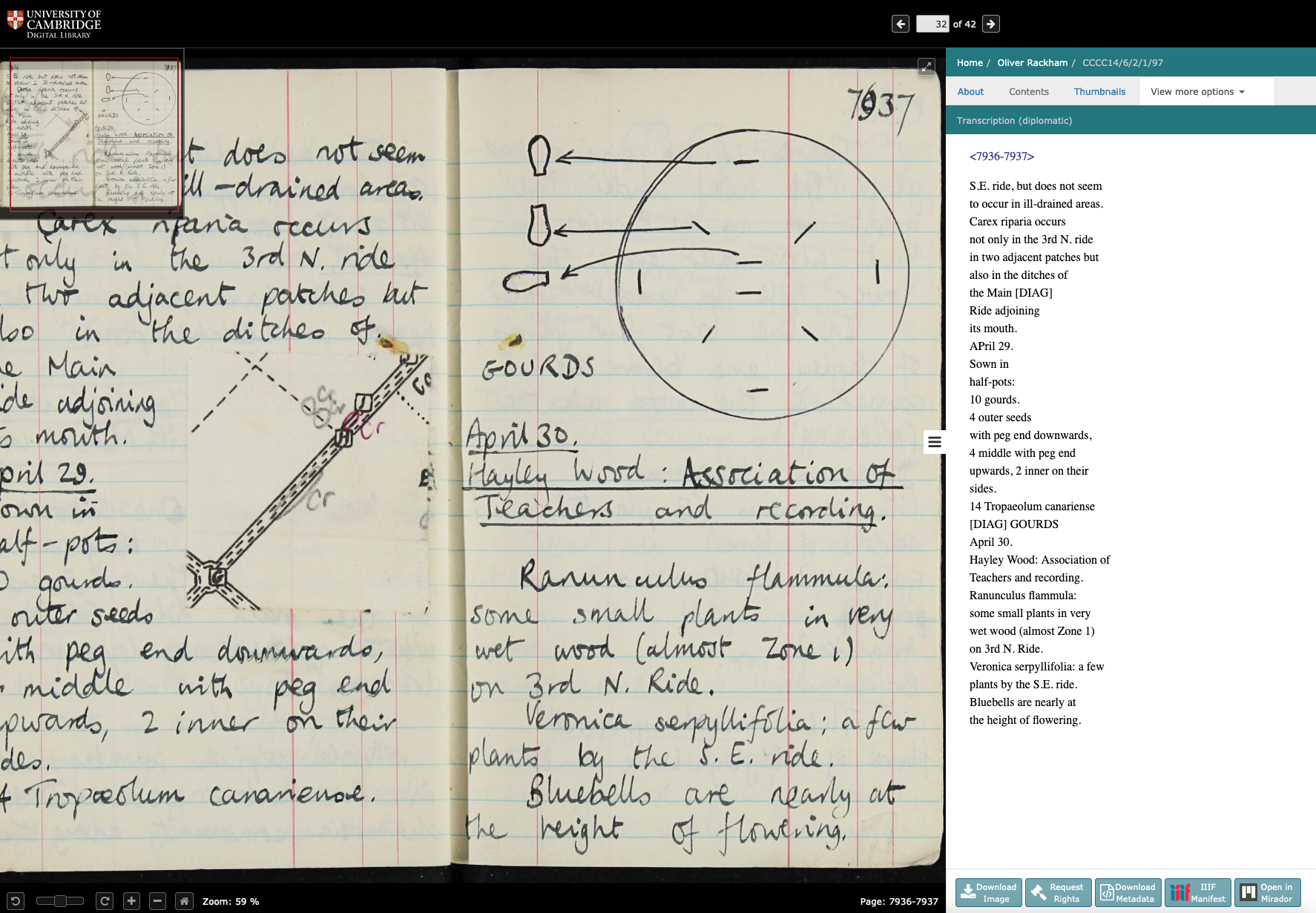
An example of a transcribed notebook on the Cambridge Digital Library. Credit: The Master and Fellows of Corpus Christi College, Cambridge
An example of a transcribed notebook on the Cambridge Digital Library. Credit: The Master and Fellows of Corpus Christi College, Cambridge
So far, around a quarter (86 notebooks) have been transcribed with 47 participants helping.
“This project has been a perfect occupation for me during the pandemic. I have felt useful and productively occupied while staying at home. But I can’t see myself abandoning it even when restrictions on movement are lifted, though my progress might be slower,” said one of the volunteers, Fay Bendall.
“Oliver Rackham was a bit younger than I am, so he wasn’t around in my early days in Cambridge. I can’t quite remember when I first came across him, but he was a very lively presence during my time in the Botany School and I was therefore attracted to this transcribing project.
“I have very much enjoyed being reminded of plants, places and people I have known: Hayley Wood and those who worked with Oliver there and on other sites as he gathered information for his amazing work on the history of woods and hedgerows. Even better, I have learned a lot about many places, plants and fungi of which I was quite ignorant. I have chosen to transcribe books about local places, which are close to my interests, and not those about his exploits abroad,” adds Bendall.
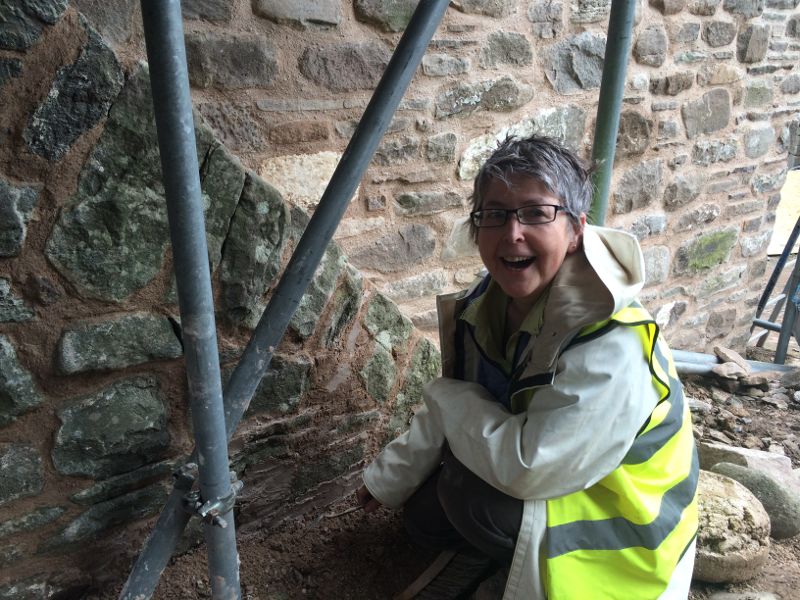
Volunteer Carys Davies.
Volunteer Carys Davies.
Another volunteer, Carys Davies, said: “Transcribing the notebooks has been stimulating: remembering all the plants, deciphering the Anglo-Saxon charter quotes, following the train lines on a map, both on familiar territory and in the Alps. The Wylye! Zermatt!
“I could wish that he always used ink rather than pencil, although there's never a blot (my own ink pen is only used indoors for this reason). And the use of "-ize" rather than "-ise", is that a Cambridge thing? And thank goodness for Wikipedia!”
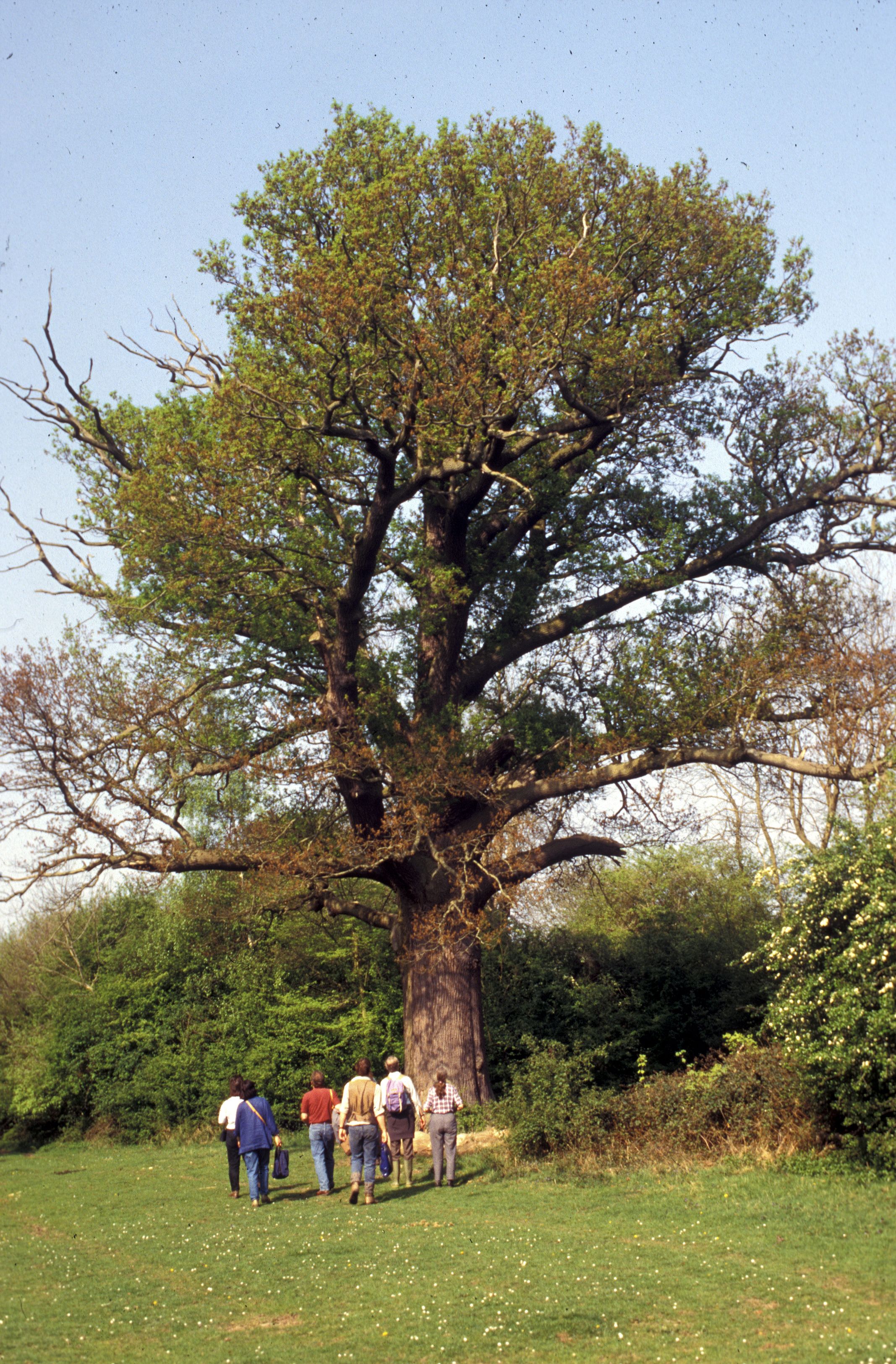
Oak with caterpillar damage, Hatfield Forest, 4 May 1995. Taken by Rackham. Credit: The Master and Fellows of Corpus Christi College, Cambridge
Oak with caterpillar damage, Hatfield Forest, 4 May 1995. Taken by Rackham. Credit: The Master and Fellows of Corpus Christi College, Cambridge
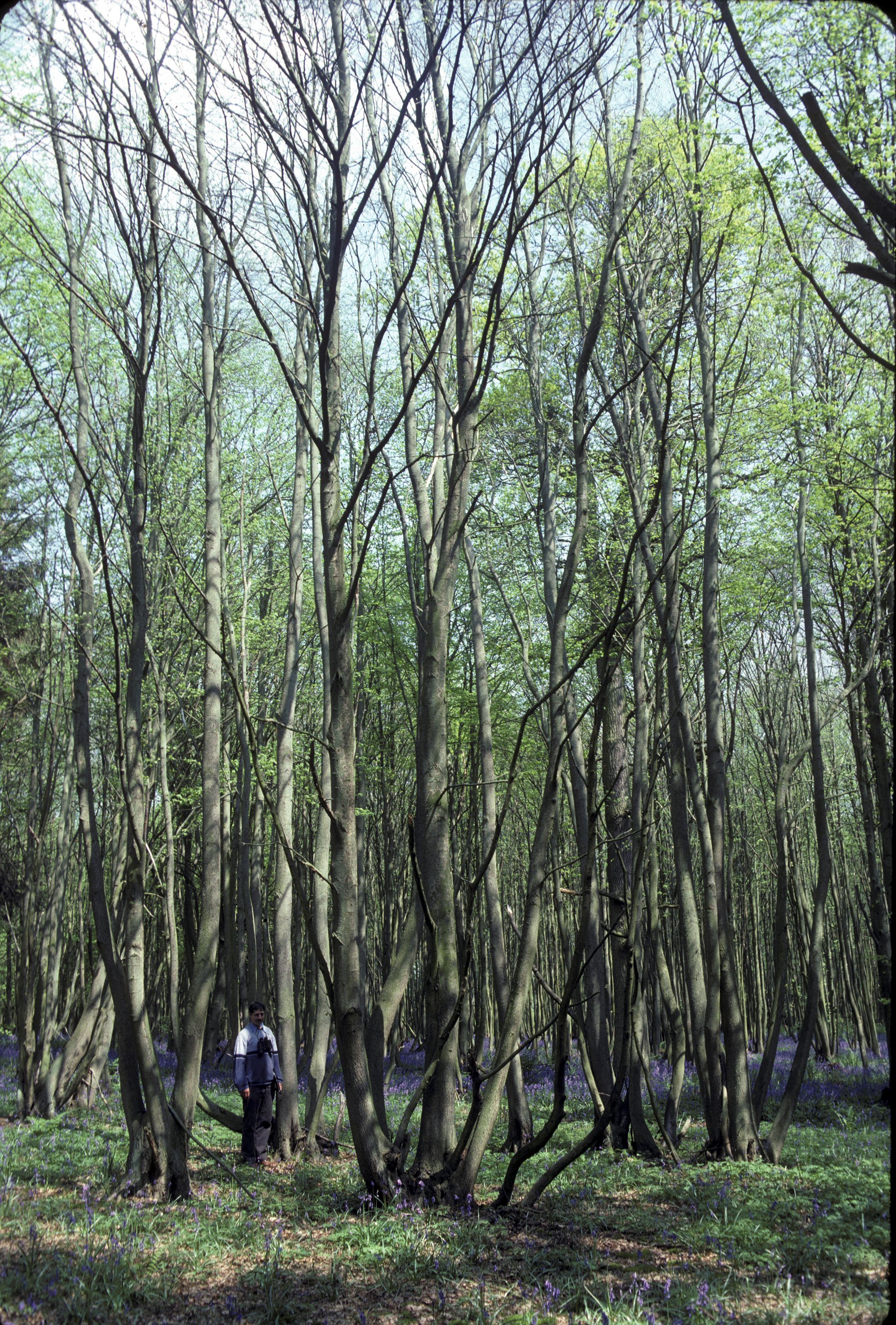
Clonal ring of lime, Elbow Fall, Shrawley Wood. Taken by Rackham. Credit: The Master and Fellows of Corpus Christi College, Cambridge
Clonal ring of lime, Elbow Fall, Shrawley Wood. Taken by Rackham. Credit: The Master and Fellows of Corpus Christi College, Cambridge
Rackham’s red covered notebooks record his observations while observing the landscape and include sketches of plants and fungi. They form a chronological sequence, and were kept continuously by Rackham from his youth right up until his death in February 2015. They record observations on plants seen on his travels as well as in his home surroundings, as well as in college.
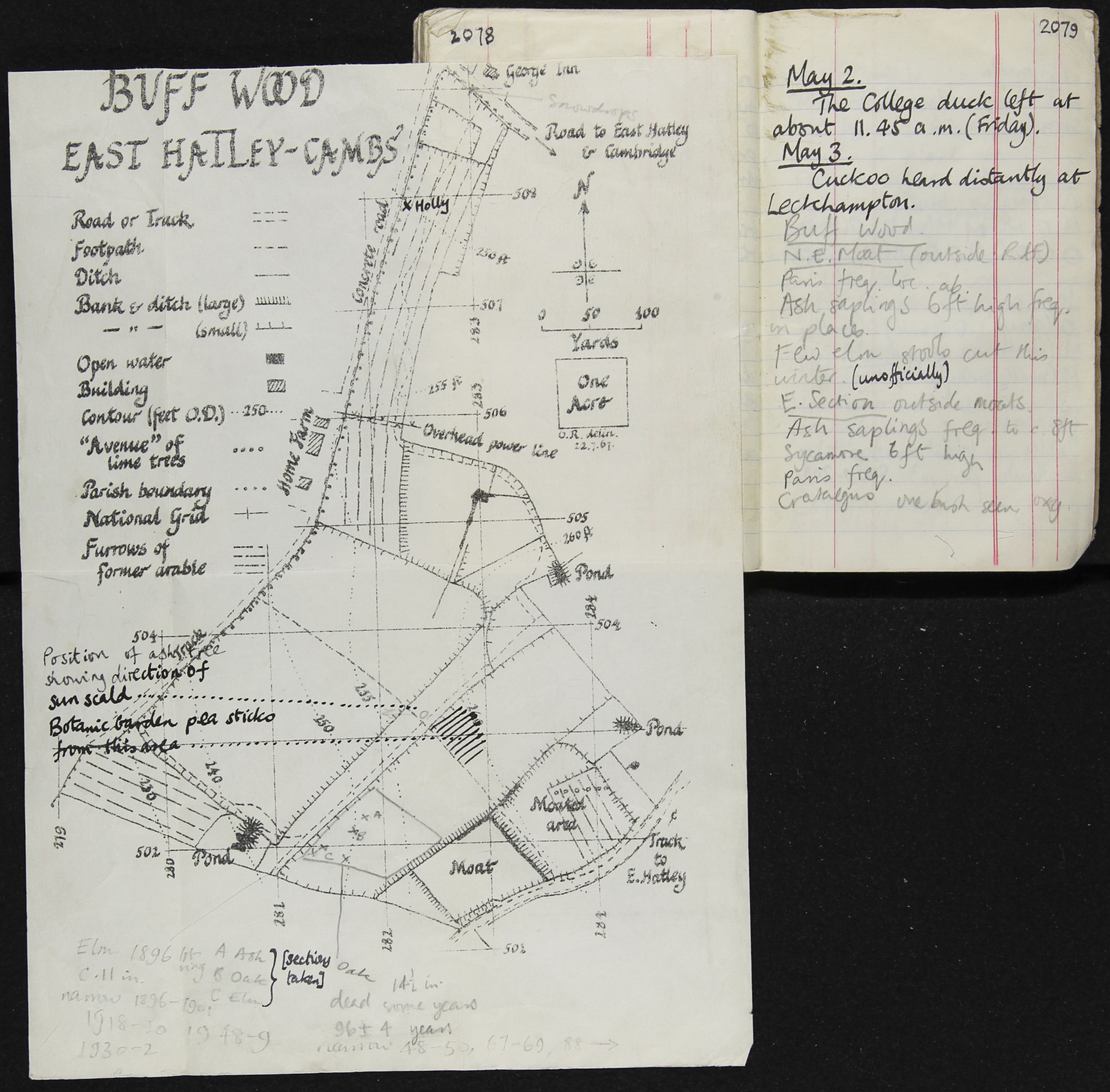
An example of an entry in Rackham's red notebook from 1969. Credit: The Master and Fellows of Corpus Christi College, Cambridge
An example of an entry in Rackham's red notebook from 1969. Credit: The Master and Fellows of Corpus Christi College, Cambridge
Rackham’s blue notebooks tended to contain more structured data in the form of tally charts showing incidence of plant species, as well as maps and tend to be more location-specific.
In addition, Rackham created an herbarium, collecting plant samples from all around the world. This is now kept at Cambridge University’s Botanic Garden, where it is being catalogued.
When conducting fieldwork, Rackham would also take photographs to preserve a ‘snapshot’ of the particular location at a specific moment in time. These complement the written record kept in the notebooks, and the archive of his slides and prints is also kept at Corpus Christi College.
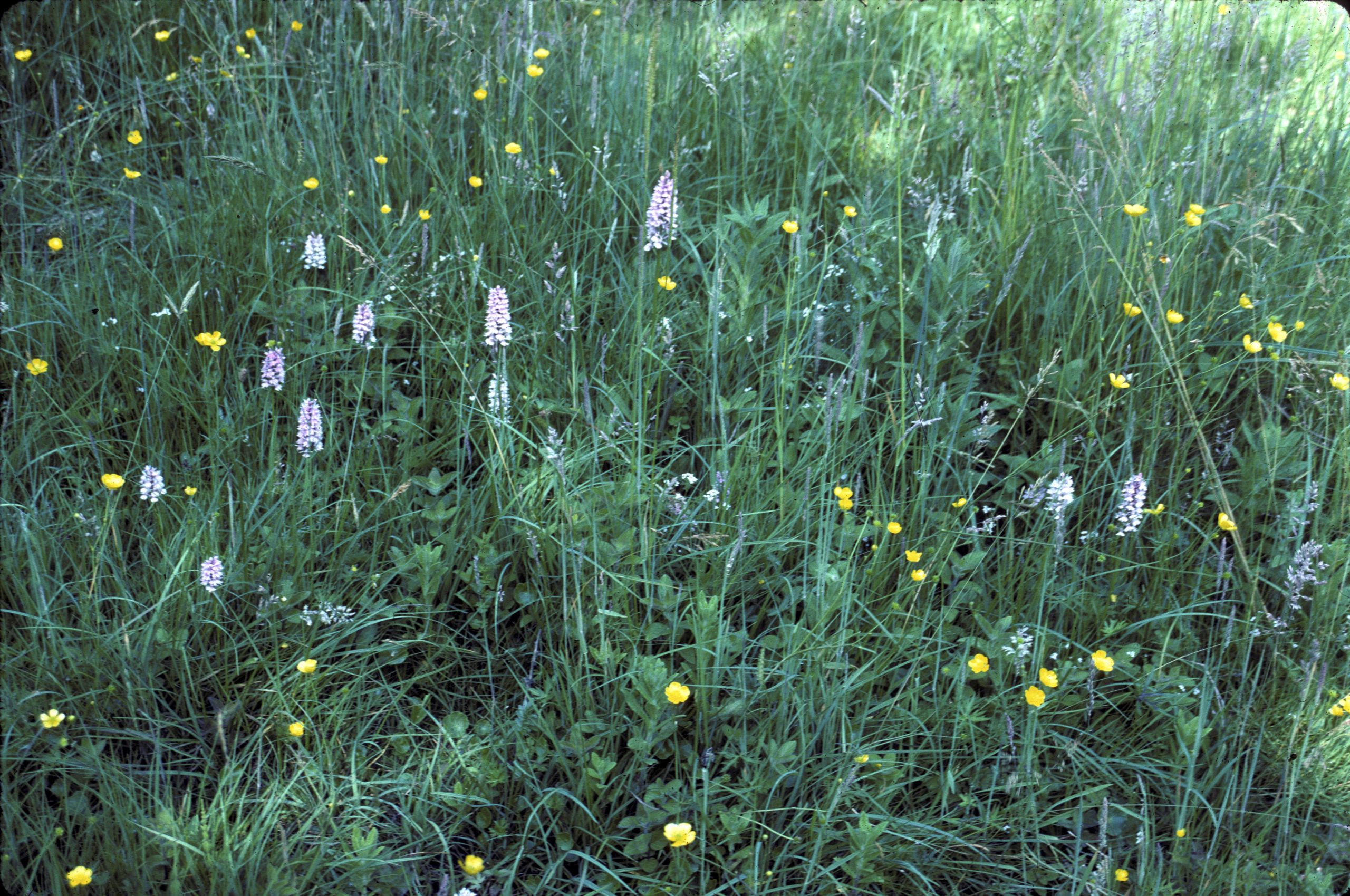
Marsh and spotted orchids, North West of Hatfield Forest, taken by Rackham. Credit: The Master and Fellows of Corpus Christi College, Cambridge
Marsh and spotted orchids, North West of Hatfield Forest, taken by Rackham. Credit: The Master and Fellows of Corpus Christi College, Cambridge
“Oliver's work was a major inspiration to me as to so many others: he pioneered a cultural ecology, we might say, that was profoundly literate in social history as well as ecological intricacy,” said Robert Macfarlane, Reader in Literature and the Geohumanities in the Faculty of English and bestselling author. “And allied to that were strong, clear senses of worth and good: how landscapes might be made better for both people and nature."
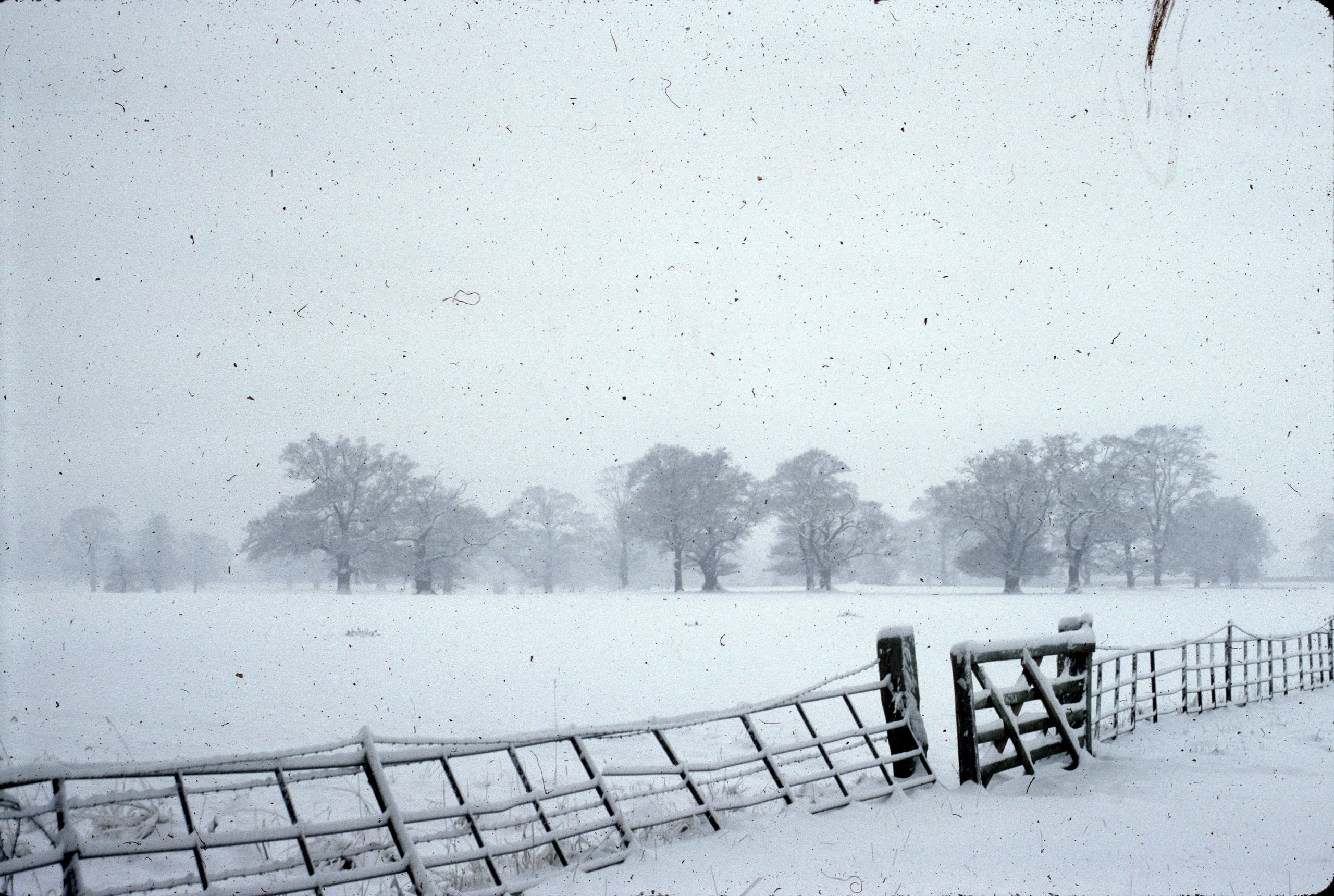
During the first year of the transcription project launching, page views were more than double that of any previous year and site searches relating to Rackham have also increased.
User engagement with the digitised notebooks has greatly improved, with 80% of users looking at more than one page (previously around 60%), and users looking at each page four times longer than previously, since the project began.
With over 300 notebooks to transcribe, the project is set to continue and more volunteers are welcome. Planned for later in the year are new additions featuring Rackham's descriptions of sites he visited in Greece (particularly the special site of Mount Athos) and Portugal. If you would like to contribute, you can find out more information on the crowd-sourcing project website.
“Being able to put all this online for the world is one thing, but to understand its context is something quite special, and that’s a fantastic demonstration of the benefits of 'the digital'," says Corrigan.
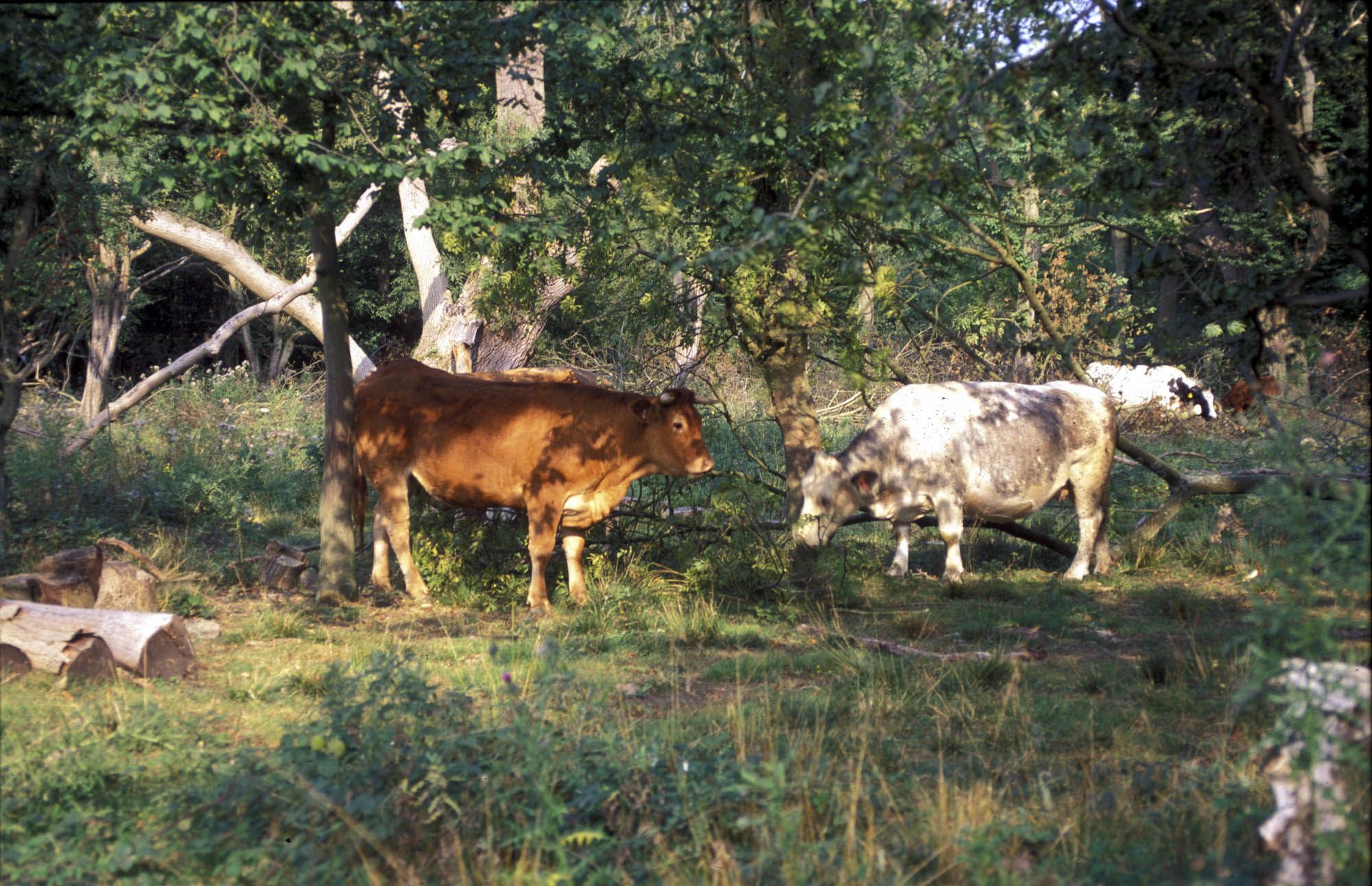
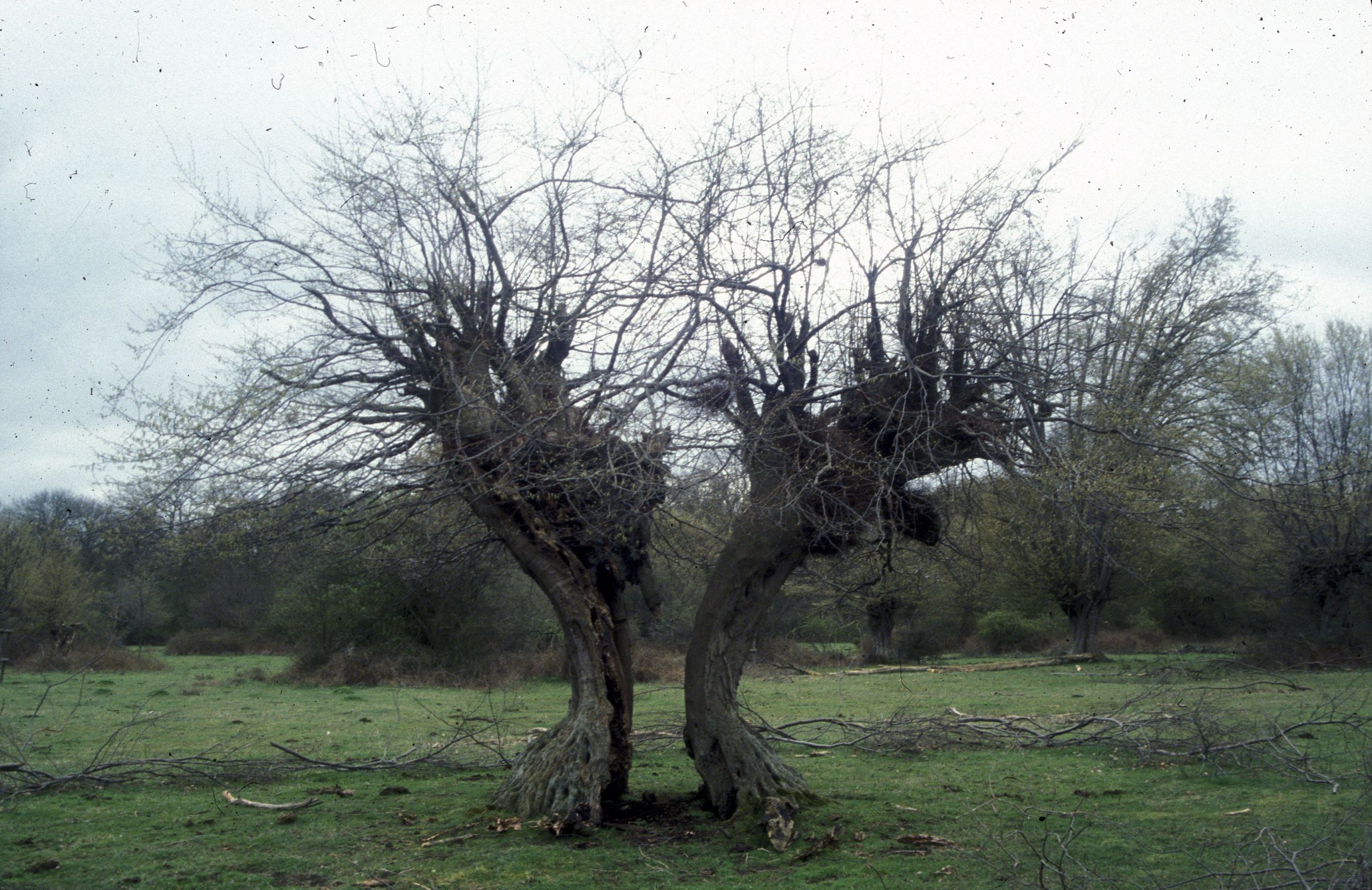
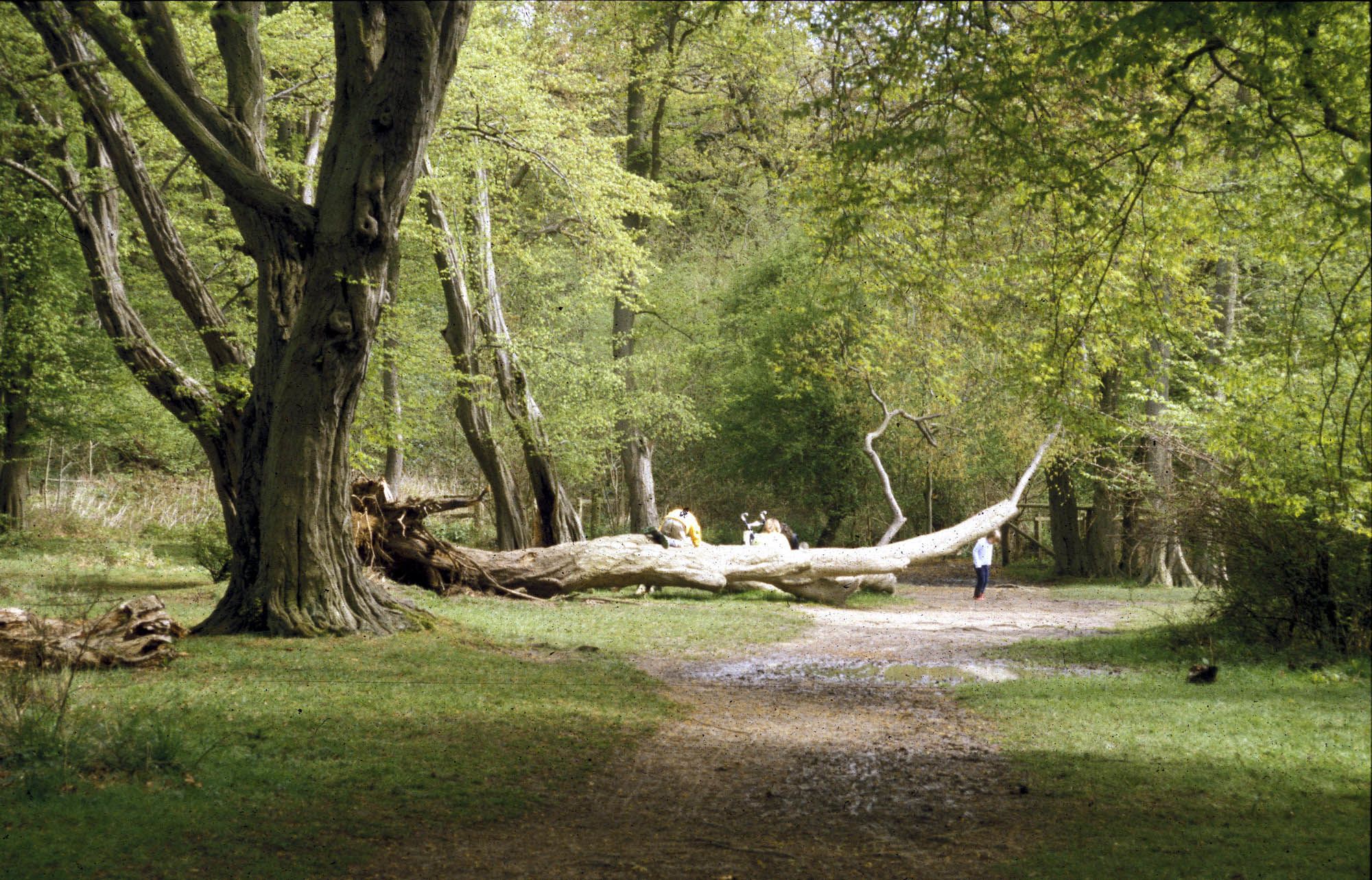
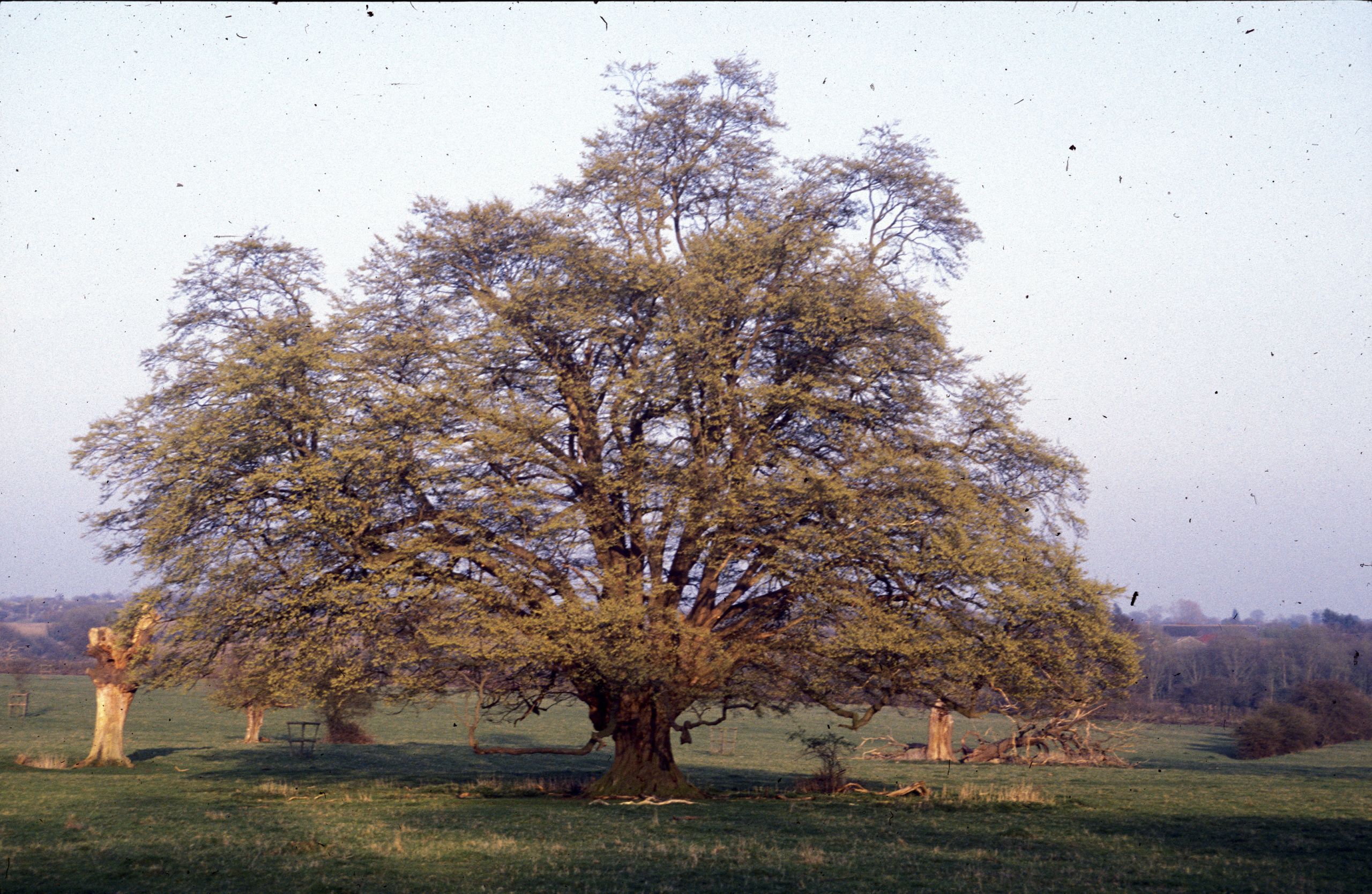
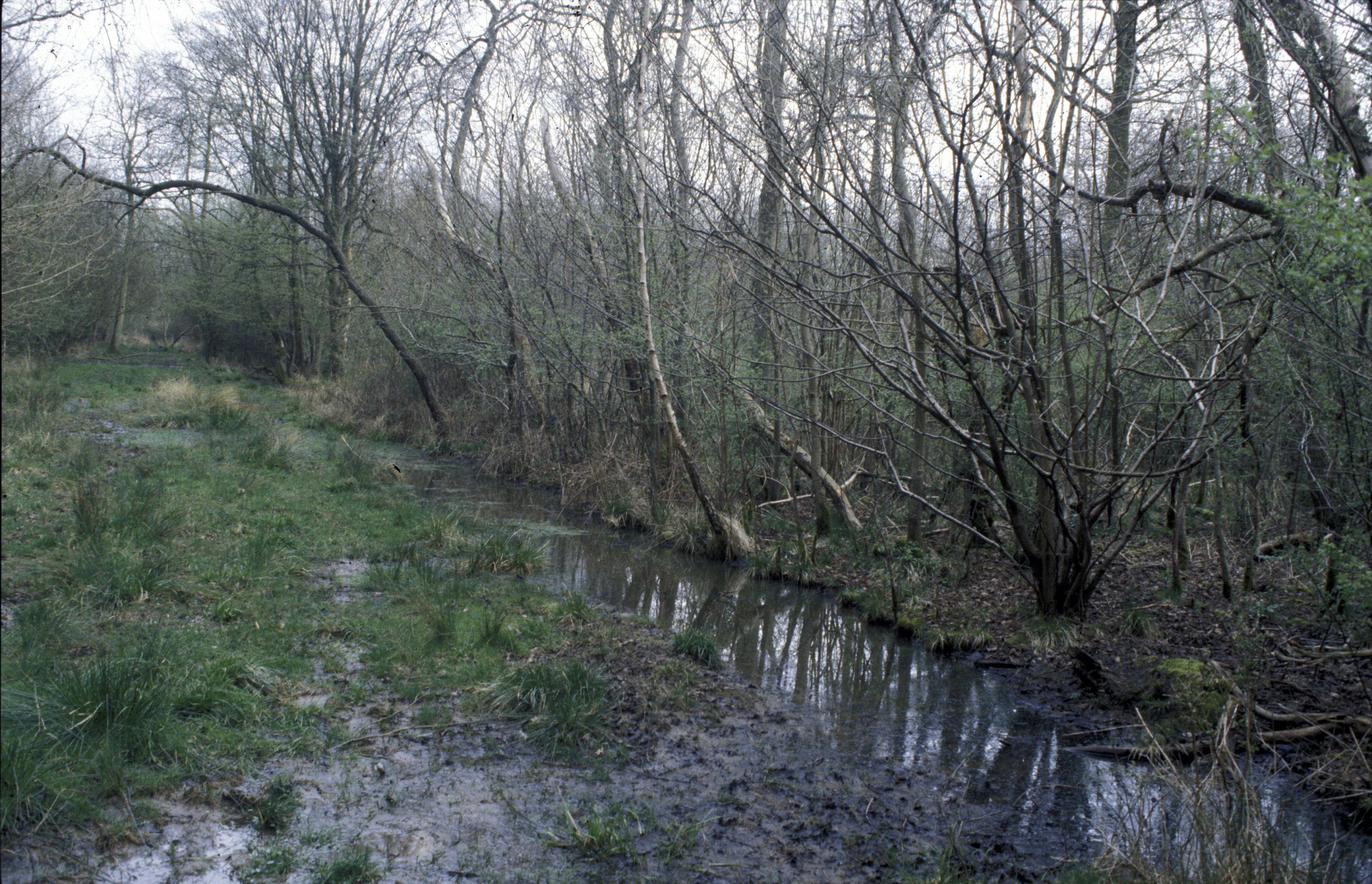
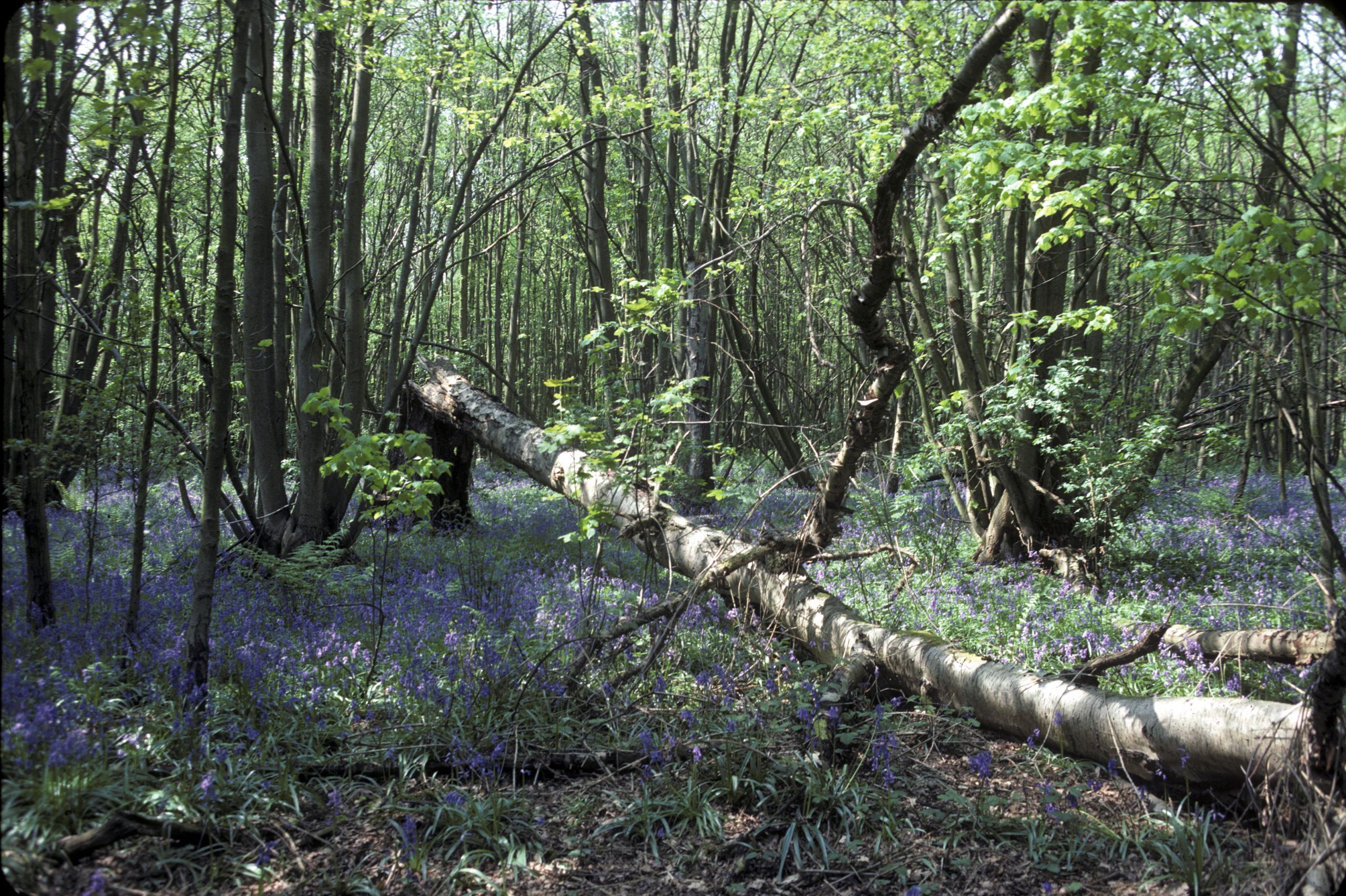

Cattle in scrub, South of Hatfield Forest, 5 September 2002. Taken by Rackham. Credit: The Master and Fellows of Corpus Christi College, Cambridge
Cattle in scrub, South of Hatfield Forest, 5 September 2002. Taken by Rackham. Credit: The Master and Fellows of Corpus Christi College, Cambridge

Pollard hornbeam, Bush End, Hatfield Forest, 7 April 2004. Taken by Rackham. Credit: The Master and Fellows of Corpus Christi College, Cambridge
Pollard hornbeam, Bush End, Hatfield Forest, 7 April 2004. Taken by Rackham. Credit: The Master and Fellows of Corpus Christi College, Cambridge

Children on fallen hornbeam, Gravelpit Coppice, 27 April 2000. Taken by Rackham. Credit: The Master and Fellows of Corpus Christi College, Cambridge
Children on fallen hornbeam, Gravelpit Coppice, 27 April 2000. Taken by Rackham. Credit: The Master and Fellows of Corpus Christi College, Cambridge

Pollard hornbeam, Takely Hill, 27 March 2002. Taken by Rackham. Credit: The Master and Fellows of Corpus Christi College, Cambridge
Pollard hornbeam, Takely Hill, 27 March 2002. Taken by Rackham. Credit: The Master and Fellows of Corpus Christi College, Cambridge

Very wet, Street Coppice, 12 April 2001. Taken by Rackham. Credit: The Master and Fellows of Corpus Christi College, Cambridge
Very wet, Street Coppice, 12 April 2001. Taken by Rackham. Credit: The Master and Fellows of Corpus Christi College, Cambridge

Giant fallen birch, Elbow Fall, Shrawley Wood, taken by Rackham. Credit: The Master and Fellows of Corpus Christi College, Cambridge
Giant fallen birch, Elbow Fall, Shrawley Wood, taken by Rackham. Credit: The Master and Fellows of Corpus Christi College, Cambridge

